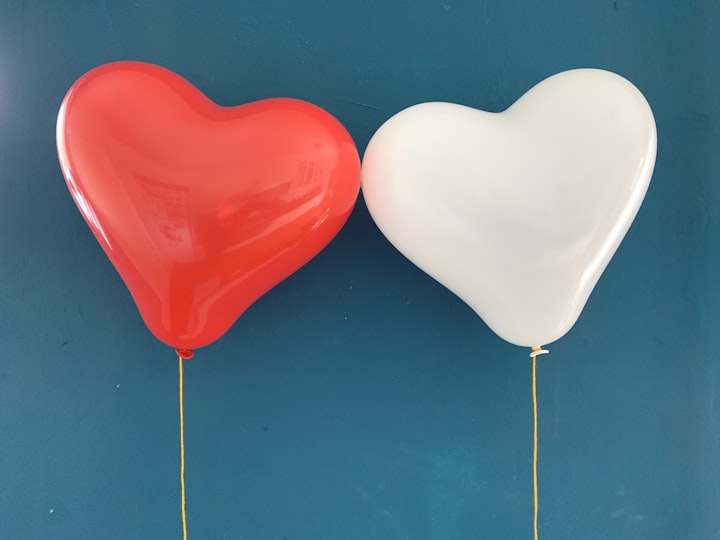Triangular Theory of Love
Triangular theory of love - because love is not just love

Human emotions are complex, especially the feeling of love, which is difficult to explain.
Some people wonder where true love comes from because when we experience love, it often comes with other emotions. It can be infatuation, admiration, reverence, affection, and undoubtedly, love takes on various forms for us to encounter.
We are familiar with the word 'love,' but it can be challenging to fully understand it from different perspectives. This may be because each person has their own definition of this word.
Love is a feeling that is beautiful and makes us realize that we are not alone in the world. This feeling brings along other emotions like warmth, security, and happiness. However, attempting to define love from books often leads to the conclusion that we should smile to ourselves.
One such definition goes like this: "In truth, love... isn't complicated at all. Love is when we are ready to let someone else into our lives, to share our stories, to be each other's encouragement, and to fill the gaps. It's about being there to support and uplift one another. But at the same time, each person can still lead their own life."
Referring to a certain study, it is said that the feeling of love is the most difficult to understand. We don't know where love comes from, how much one person can feel, and if asked what love really is, it's genuinely challenging because, since birth, we have experienced various forms of love—family, friends, partners, pets—and each definition of the feeling we give to each relationship is different.

Triangular theory of love
The definition of love can vary widely based on one's culture, beliefs, and personal perspectives. However, the triangular theory of love is a widely accepted psychological framework for understanding love and different forms of romantic relationships.
According to the American Psychological Association (APA), the triangular theory of love, developed by Robert Sternberg, is related to the nature of love and various forms of romantic relationships. It comprises three components:
1. Intimacy: This component refers to feelings of closeness, warmth, understanding, and connection in a relationship. It results in a sense of emotional closeness and a deep bond, contributing to long-term relationships.
2. Passion: Passion represents the intense physical and emotional attraction between individuals. It leads to romantic and sexual desire and plays a significant role in the romantic aspects of a relationship.
3. Commitment: Commitment involves the decision-making aspect of love. In the short term, it signifies the decision to love someone, while in the long term, it represents a commitment to maintaining and preserving that love.
The level and type of love that individuals experience depend on the strength of these three components and their interactions. For example, a high level of intimacy may lead to increased passion and commitment, and vice versa. Different combinations of these components can describe various aspects of love and different types of love.
The triangular theory of love provides a comprehensive framework for understanding the multifaceted nature of love and the various forms it can take in different relationships.

Here are the different types of love:
1. Non-love: This is a type of relationship where there is no love involved. It's a relationship where there are no romantic feelings, often occurring when people only know each other superficially.
2. Liking: Liking involves affection and closeness in a relationship. It's a form of love that occurs in friendships.
3. Infatuated love: This type of love is characterized by intense physical attraction and a fascination with the external appearance of the other person. It often lacks emotional closeness or commitment and can be fleeting, like love at first sight or a one-night stand.
4. Empty love: Empty love is a relationship that has commitment but lacks intimacy and passion. This can be seen in couples who have been together for a long time but no longer feel the emotional or physical attraction they once did.
5. Romantic love: Romantic love involves both intimacy and passion. It is the type of love that most people think of when they think about romantic relationships. It often includes emotional closeness and a strong physical attraction.
6. Companionate love: Companionate love combines intimacy and commitment. It's a long-term love that is often found in friendships, family relationships, or couples who have been together for a significant amount of time. While there may not be intense passion, there is a deep emotional connection and commitment.
7. Fatuous love: Fatuous love combines passion and commitment but lacks intimacy. It often results from a quick decision to commit to a relationship without truly knowing each other deeply. This type of love can be impulsive and short-lived.
8. Complete love: Complete love encompasses all three components: intimacy, passion, and commitment. It is considered the ideal form of love, but it is also challenging to achieve and maintain.
These are the various types of love that can exist in different types of relationships.

Love and attachment are two distinct yet interconnected components that can coexist in a person's relationships. Here's some additional insight into the differences and possible intersections between love and attachment:
Love: Love is an emotional feeling that recognizes the worth of another person. It involves positive emotions such as affection, caring, and the desire for both happiness and sadness to be shared with the loved one. Love often relates to feelings of closeness and infatuation and is characterized by strong emotional involvement.
Attachment: Attachment develops in long-term relationships and is often associated with stability and a sense of partnership. It results from shared experiences and mutual bonding. People in attached relationships tend to have responsibilities towards each other and feel secure within the relationship.
Love and attachment are not always mutually exclusive. Sometimes attachment can develop even in the absence of romantic love, while love can exist without attachment. People can experience various forms of relationships and appreciate the value of each type in their lives.
It's important to understand and recognize both love and attachment in our lives and relationships. Attachment can develop over time through shared experiences and responsibilities, even if the initial spark of romantic love fades. People may stay in relationships for reasons other than romantic love, such as a sense of responsibility, fear of change, or shared history.
Some interesting concepts related to attachment include:
Involvement Devoid of Feeling: This is a situation where one may be involved or attached in a relationship without deep emotional connection or genuine concern for the other person. It can be one-sided involvement.
Lack of Involvement: In this case, a couple may lack interest or involvement in each other's lives beyond mere coexistence. Their relationship may lack emotional depth, and they may lead separate lives.
In summary, love and attachment can be intertwined, but they are not always the same. Attachment can develop independently of romantic love, and love can exist without long-term attachment. Understanding the nuances of these emotions in our relationships can help us navigate the complexities of human connection and commitment.

The triangle of love in our relationships can indeed change over time. Love is a matter of emotions, and feelings can change. One day, we may feel deeply in love with someone, and as time passes, those feelings may lessen.
What remains are the positive hopes and good feelings we have for each other. These are like the components of the triangle of our love.
Taking care of love within the triangle involves wanting good things to happen for each other, showing concern, and caring for each other, even if we don't fulfill all three components of the triangle of love. Love must continue to evolve.
A good love relationship doesn't necessarily require all three components to be present simultaneously. However, they should not harm each other. If we love as if we want to be together all the time and can't live without each other, it means words and actions need to be in line.
Toxic behavior is never a good idea. It may turn the love story into a bad one for the other person, and it might make us hate them as well.
This theory may help us understand and see the bigger picture of why love stories can be so complex and sometimes hard to grasp. Every one of us is different, and every relationship is unique.
The theory itself cannot determine or judge anyone's relationship. Most importantly, we should try to maintain good relationships because every relationship can provide social support that benefits us.
In summary, love and relationships are multifaceted and can change over time, but maintaining positivity, care, and concern for each other is essential for nurturing love within the ever-evolving triangle of love.
About the Creator
Analogvibes
I enjoy writing about inspiration, health, art, culture and poetry.






Comments (1)
Interesting! I love all the love!